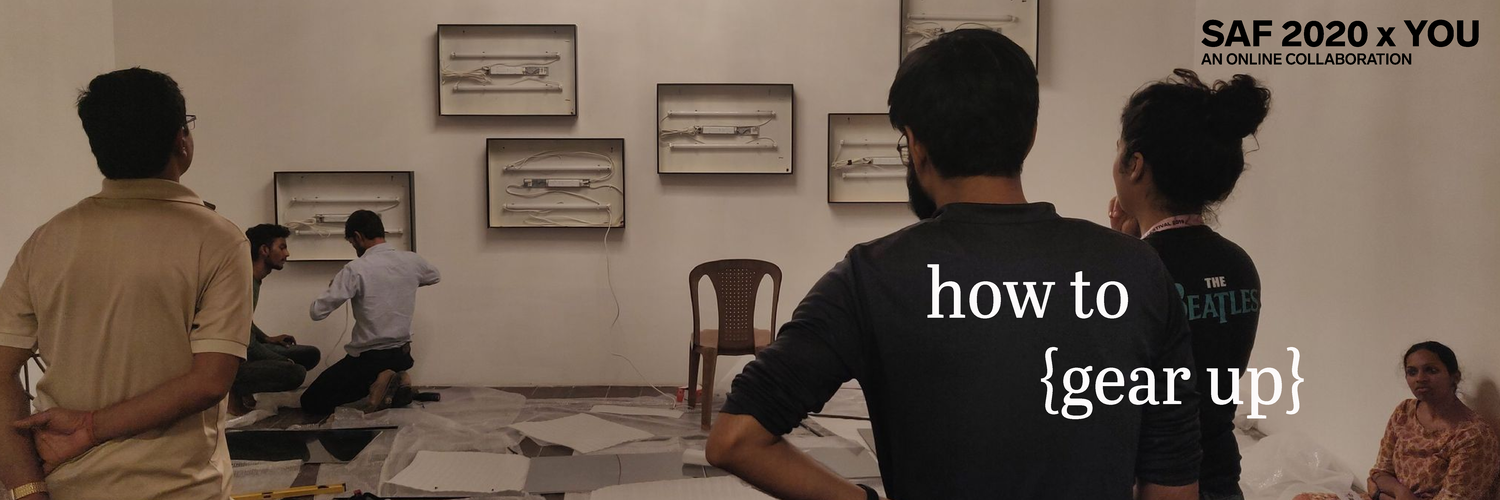
How to {gear up}
Suit up. Mask on. Sanitiser ready, gloves optional.
We’re all used to this drill now. But we remember days when gearing up meant long hours at installation sites; chai with electricians and technicians; poring over countless plans with curators; rooms bleeding into rooms; conversations over light fixtures and accessibility; deadlines, new deadlines, retired deadlines; madness and adrenaline; the ballad of the forgotten HD cables; “Someone steal that blue tack now!”; “Who took that pair of scissors?!”
We long to gear up for art.
As we stay socially distant, we glimpse into the secret world behind an art event. Through a series of conversations on the material world of art—floor plans and lighting, production and tech, we speak to our collaborators to understand how art exudes aura through presentation. Exploring what lies beneath the surface, we present a conversation by an international jury for the Serendipity Arles Grant, which unravels the processual aspect of grant-giving—deliberation and principles behind the selection of grantees.
And then, we return to our homes, to consider ways in which we can make small changes for the better—for our health, our world, and eco-system.
Gear up. It’s been a minute.

#serendipityconversations
As we increasingly rely on ourselves for sustenance, “how-to” videos, tutorials, and stories have gained prominence on the web. We extend the idea of care, sharing, and reliance that motivates these practices to the world of art, as we enter the minds, processes, and strategies used by curators, artists, and experts to bring their visions to life. Each week we approach a new “how-to”: exploring the complexities of art through approachable, close-to-life conversations.
Flying High: The World of Aerial Rigging
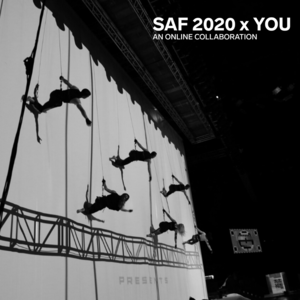
Tracing the journey from the inception of Natura to its present-day form, this session will lay out foundational precepts of aerial rigging such as, the contexts of its application across different types of performances and events; its deployment in different sites; key equipment and how they differ from tools used in rock climbing or stunts; and walk audiences through the process of planning an aerial rigging—steps needed to prepare the equipment and set-up, as well as safety precautions to be kept in mind. The session will conclude by discussing the role of latesttechnologies such as motion control, and the significance of aerial rigging in making events special and valuable, besides focusing on education and preparation for any untoward circumstances.
You can watch the discussion on Facebook
Light for Art & Light as Art
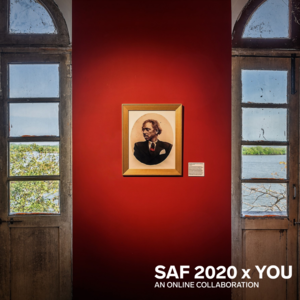
Each year, for the last four years, we’ve been asked to light the Serendipity Arts Festival, an event that has us working with some amazing, intense, demanding (and occasionally irate) curators and artists. It always come down to the wire – with time, equipment, resources, and patience.
But in Goa, the festive ingredient is truly special – beyond and within the cornucopia of creative thoughts, actions and reactions is an elevation of mood like no other. There you stand or wander – empathetic, impressed, provoked or bewildered, or perhaps a culmination of all these reactions, to behold a series of venues that undergo a startling transformation – from 14th-century palaces, churches, erstwhile medical and management colleges and government offices – into extraordinary art spaces.
We’re happy to dive into our toolbox of skills and share our experiences lighting different art venues across the country.
You can watch the discussion on Facebook
New Futures: Grant-making Practices for the Contemporary
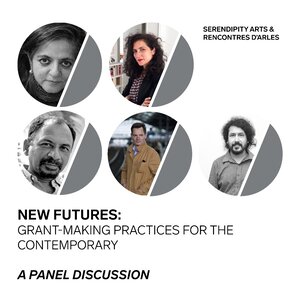
This conversation between jury members Dayanita Singh, Devika Singh, Ravi Agarwal, and Tanzim Wahab for the Serendipity Arles Grant 2020 (SAG) will focus on redefining and better understanding grant-making approaches and also address queries with regard to applications for the SAG 2020. The discussion will be moderated by Sam Stourdzé.
You can watch the discussion on Facebook
The Backstage Theory: Building the Festival as We Know It
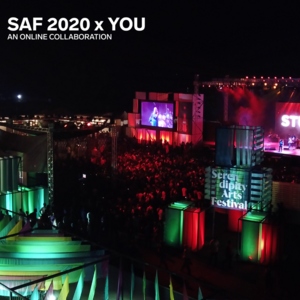
A conversations between Manoj Gopalani and Abhishek Mehta
Violet and White Floral Watercolor Mother’s day
This session aims to throw light on the “homework” which goes behind planning, executing and managing a world class event or festival. At events, what we usually see is the final product. But there is a lot more to it than what meets the eye. This session, with the help of our experts, is all about informing the audience what they don’t get to see ‘behind the screens’, showcasing the most important part of any event worldwide: people and processes.
You can watch the discussion on Facebook
How to Live a Guilt-free, Zero-waste Life
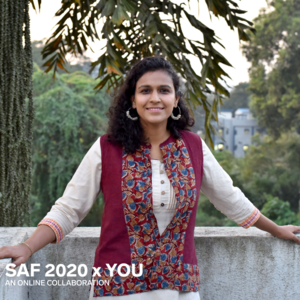
How to convert to zero waste in your house.
How to grow a kitchen garden with the waste generated from kitchen.
How to choose products keeping environmental concerns in mind.
You can watch the discussion on Facebook

Behind the Scenes

P.S. Out of the Blue
Goodbyes are difficult! We’ve slowly and steadily reached the last week of the How To series! Wow!
We’ve realised that in these times of social distancing, we have come close to our digital family – see if you can find someone you know. If not, you could also make a real time family tree.
But we saved some of our best finds across the internet for the last week. A movie quiz based on famous objects can only be matched by pointless pictures of pointer pointers.
Some may find the world wide web a pandora’s box of useless things, while some may learn to make the most of everything. It’s a place that lets you travel the world with the click of a mouse and even think of the value of a day or watch the earth as a piece of art. But whatever it maybe, the internet remembers everything and is an honest place. And thus these wonderful newsletters will be here, till one day this page not found!
That’s it folks! GoodBye!
Reading and Resources Library
This week we select essays that surgically peel back layers to reveal the “making” of a moment in art. Dissecting the cross-disciplinary collaboration behind five public works of art; a deep-dive into the most dizzyingly hyper-sensorial documenta yet; a meditation on how art that proximates—individuals and bodies—will fare in the future; and a conversation with Seth Riskin on the confluence of perception, movement, technology that creates “Light Dance”.
Creative Construction: How Artists and Engineers Collaborate / SOM (Medium)
Installations Everywhere: Disorientation and Displacement in Jan Hoet’s documenta IX (1992) / Angela M. Bartholomew (OnCurating)
Essential Workings / Andrea Nitsche-Krupp (Open Space)
Q & A with Seth Riskin / Arts at MIT

Follow us on Instagram!

Serendipity Grants
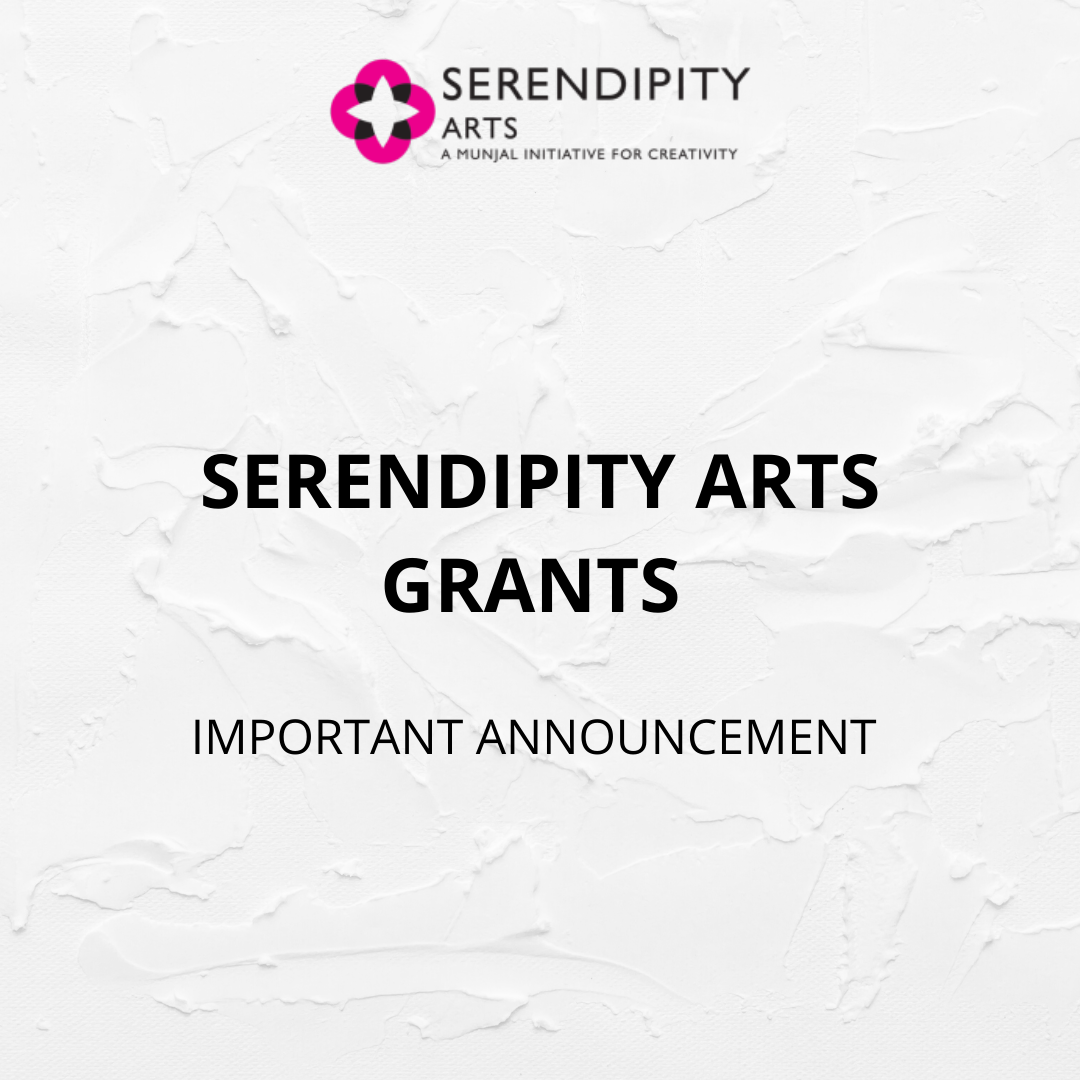
Owing to the rapidly evolving global situation due to COVID-19, we will be revising the criteria for applications and timelines as part of our grant scheme. Please stay tuned for more information and further announcements. Thank you.

HOW TO READ
No other question has perhaps borne such weight as this: how to read? Reading is understood as the first step towards comprehension. But what is left to comprehend?
A person, a place, a moment in time, a memory, a story, a gesture, something strange, out of the usual order of things; the arrival of new horizons. A frame flickering through our screens, a melody seeping into our head, a scene frozen in time. How do we read a mood? How do we read change—imperceptible and rapid?
Imagine an empty space that extends indefinitely, no walls, no boundaries, no limits, no colour, or sound. Can we read nothingness? Or think of shelves filled with official documents. Can we take the silent corners of archives and histories, and begin to read absence?
In How to Read, we go beyond the understanding of reading as an engagement with words, to open our eyes to reading as a way of life, a practice in empathy. We explore ways to read movements, to read images—moving and still, to read habitats, and relations, to read power and to read that which it renders invisible, what is unsaid, and what is not heard enough.
#serendipityconversations
As we increasingly rely on ourselves for sustenance, “how-to” videos, tutorials, and stories have gained prominence on the web. We extend the idea of care, sharing, and reliance that motivates these practices to the world of art, as we enter the minds, processes, and strategies used by curators, artists, and experts to bring their visions to life. Each week we approach a new “how-to”: exploring the complexities of art through approachable, close-to-life conversations
"Folk" Performances v2.0
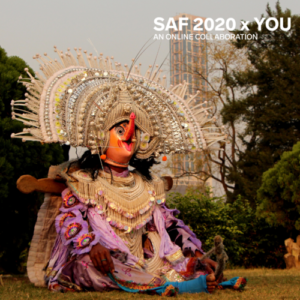
Watch the talk on Facebook
Decoding Goa's Culinary Art
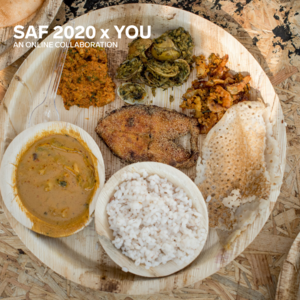
Going through the traditions followed in the different communities of Goa in my book, The Culinary Heritage of Goa, I have come to realise that over the centuries, these kitchens have ‘read’ and understood the nuances and combinations of the different ingredients in preparing a dish.
Food traditions in families are often unwritten, but are understood as the gospel truth. The recipes jotted down in memory, however, have been tweaked based on influences and occupations. Yet, the homemaker has been able to comprehend scribbled notes wherein the secrets of cooking methodology have been divulged to bring color and taste, which is the essence of Goan cuisine.
Here we will learn to read a recipe based on community kitchens in order to understand the traditional manner in which Goan food is prepared.
Watch the talk on Facebook
The (Photographic) Long Read
The (Photographic) Long Read
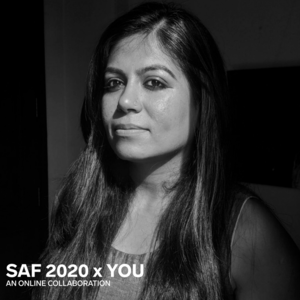
Through this session, I hope to unpack some of the decisions that go into building a visual narrative in the editorial space. During my time at The Caravan, a journal of politics and culture, which focusses on long-form narrative journalism, I have engaged with photographic projects that may lie within this realm, often exploring sub narratives in the pieces. These are then edited and produced to not only relay information, but communicate other registers, such as the historical, the psychological or the archival. The session will also address how we edit commissioned or sourced projects to work alongside our long-form text reportage, and the challenges we keep in mind with regard to representing the people and issues we speak about. Most of all, I hope to present diverse ways of looking at the medium itself, how challenges are always cropping up, and how photographers innovate and evolve along with these.
Watch the talk on Facebook
The Fundamentals of Great Film Music
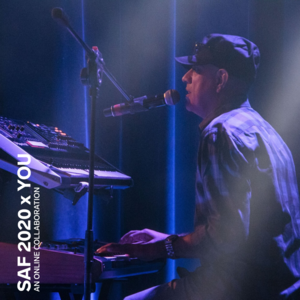
Have you ever wondered how the great composers of Hollywood and Bollywood, so effortlessly compose beautiful themes and music pieces for the films we love watching?
Music in film is an art form very different from the songs or music we normally listen to.
A good film music composer has to aid the story, thematically as well as with deep respect to the sonic ambiance in a scene. Good film music should be thematically strong but should never come in the way of the story or the dialogue. How is all this done ? Can music elicit an emotional response from the audience, whether it be that of elation, wonder, happiness, nostalgia or suspense?
Please contact us at [email protected] if you would like to watch this session!
#SAFthrowback
Tridhara, curated by Leela Samson and featured at SAF 2019, was a comprehensive presentation of three forms of Chhau: Seraikella, Mayurbhanj and Purulia.
P.S. Out of the Blue
When we stumbled upon Sarah Kays Ted talk, we knew this was the perfect time to reinvent ourselves! From being an on ground event, we are now learning and unlearning a whole new world in the digital space. We’ve been scouting the internet for fun things to see and do these past few weeks and the treasures of the internet continually amaze us! You can choose to learn or do something new here on a daily basis – whether it is perfecting a Michelin recipe, learning ‘fun’ javascript or learning to juggle or mastering a magic trick– this site is going to keep you entertained for hours!
We found a great way to relieve cyberstress. Or, if you prefer, do a winning workout instead. We suggest you don’t try these at home, but definitely more fun and interesting stuff here.
If you’ve been reading or watching a lot of the classics these days, watching Mr. Darcy being painfully awkward might make you smile, or watching the story of the last bookshop might make you cry. The wonders of the real world and the internet will continue to amaze us, till then keep safe and strong and support the arts!
See you next week!
The (Photographic) Long Read
The (Photographic) Long Read
Reading and Resources Library

From our Archives
An extract from the essay featured in Projects / Processes Vol. 1 (HarperCollins India, 2019) which discusses a film programme curated by Sabeena Gadihoke and showcased at Serendipity Arts Festival 2018.
Reflecting on Still/Moving: The Folds within Photography and Cinema // Sabeena Gadihoke
From the Internet
This week we bring you many performances of reading—strategies of understanding difference, oppression, prejudice, and justice. These essays traverse varied terrains—literature, painting, cinema, and contemporary art. They address varied concerns—social anger, neo-colonial overtures, exclusionary publics and possibilities of reading as transformative action.
James Baldwin // How to Cool It — Esquire
The Artist as Producer in Times of Crisis // Okwui Enwezor
Blending Out // Rohit Chakraborty — The Caravan
Movement and the Still Image // Mieke Bal — Revisit A Movement
We Love Panjim
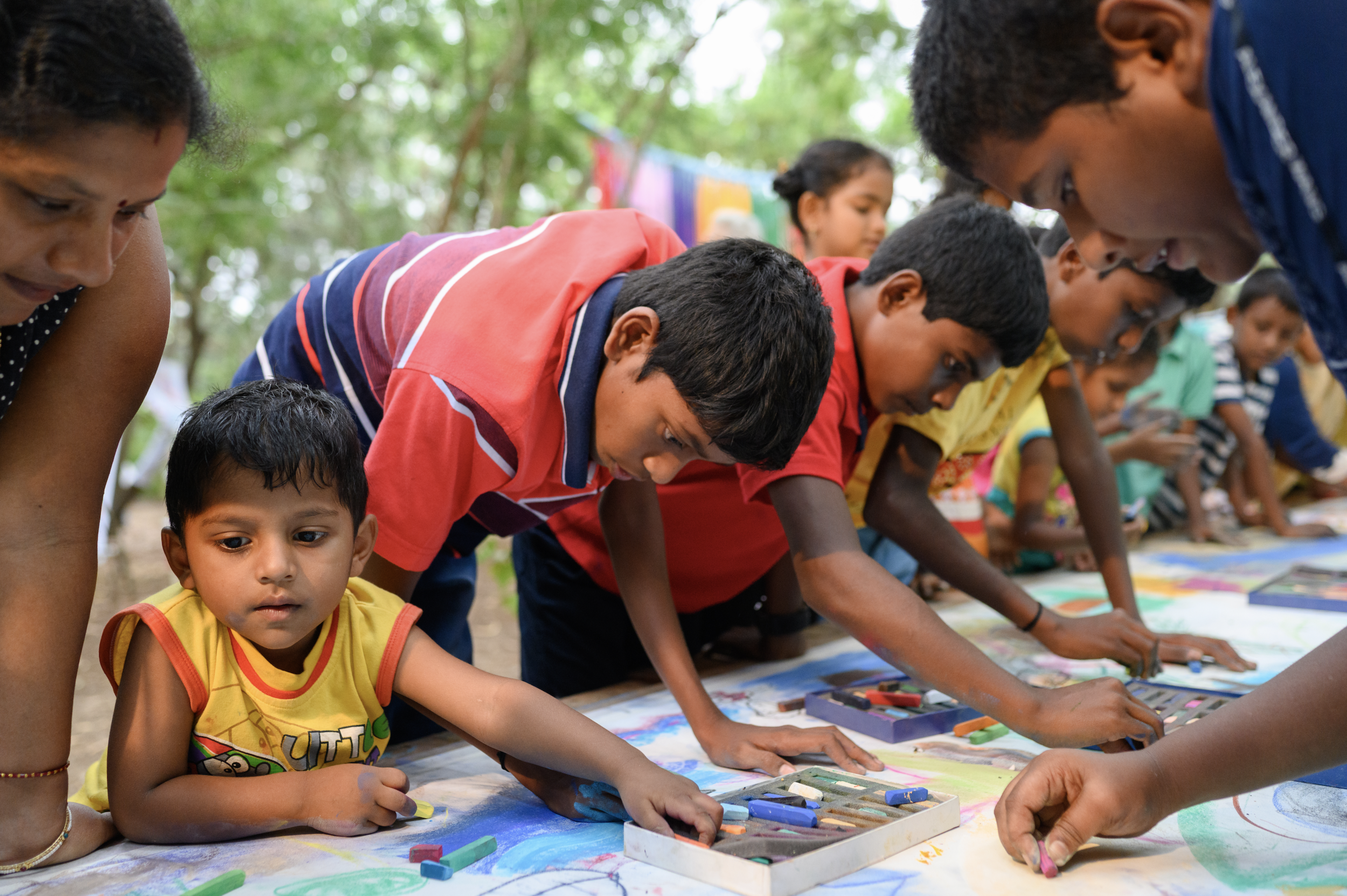
Bookworm, along with Scottish community artist Liz Kemp is conducting a unique Guided Drawing session, supported by Kokuyo Camlin! That is easily imagined by listening to a short text that is full of imagery and ideas. The session will be one hour long, and take place on Thursday June 11 between 3-4pm. To participate in this fun project, email [email protected], and we will share all the details and a link to join in!

Follow us on Instagram!
Serendipity Grants

Owing to the rapidly evolving global situation due to COVID-19, we will be revising the criteria for applications and timelines as part of our grant scheme. Please stay tuned for more information and further announcements. Thank you.

How to {Tell}
"We tell ourselves stories in order to live..." – Joan Didion
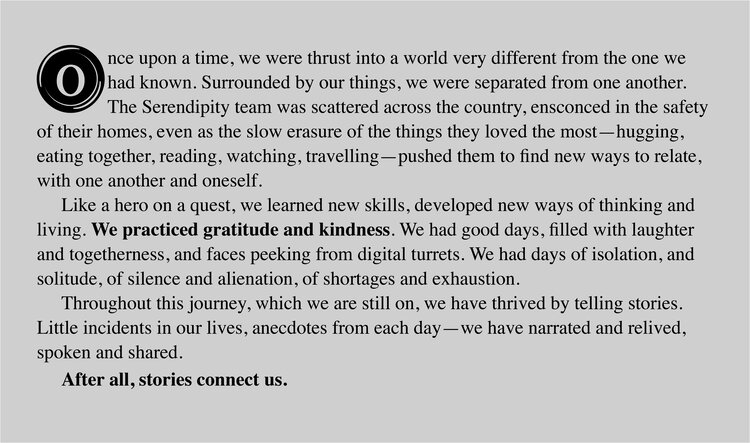
#serendipityconversations
As we increasingly rely on ourselves for sustenance, “how-to” videos, tutorials, and stories have gained prominence on the web. We extend the idea of care, sharing, and reliance that motivates these practices to the world of art, as we enter the minds, processes, and strategies used by curators, artists, and experts to bring their visions to life. Each week we approach a new “how-to”: exploring the complexities of art through approachable, close-to-life conversations.
Tell. Reveal. Discover. Experience.
A talk by Siddhant Shah from Access for ALL
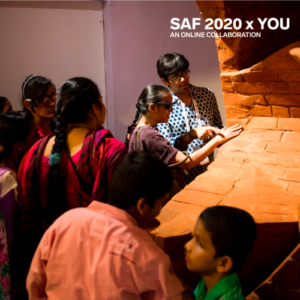
An interesting aspect of explaining art works and objects to children and those with special-needs is that it is a multi-sensory approach, as the aim is to provide information which they can fathom without being bogged down with technical word-play. The way we talk about art and objects is extremely descriptive, as we cater to varied audiences with sensory challenges encouraging us to talk about an object ‘in relation’ to or ‘with respect’ to other supplementary and complimentary contexts. Through this talk, Siddhant will uncover various approaches he takes when interpreting an object, through animated telling, visual memory banks and texture talks. He will be giving out tips and tricks for parents, teachers, and caretakers who can use them to have a vivid, colourful and experiential conversation with children. It’s not about what you tell… but it is about how you tell it!
Watch the talk on Facebook
The Music of Resistance - Reflections on Relevance and Representation in Present-Day India
A conversation between Sumangala Damodaran, Sudhanva Deshpande and Shaaz Ahmed
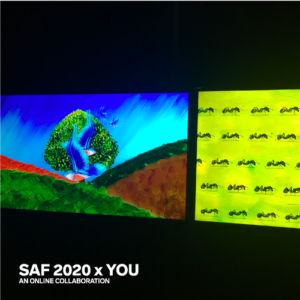
The session will address questions of how artistic practice can make sense of and represent longstanding traditions of protest music in a country like India and more broadly in South Asia. Through using the music research-design-animation collaboration between Sumangala Damodaran, Sudhanva Deshpande and Shaaz Ahmed for the ‘People’s Music’ project for the Serendipity Arts Festival, 2017 as a backdrop, the session will try to tease out how artists might look at the genre of protest music from different artistic viewpoints and why this might be relevant at all in the present context.
Watch the discussion on Facebook
Abhinaya: Sharing versus Conveying
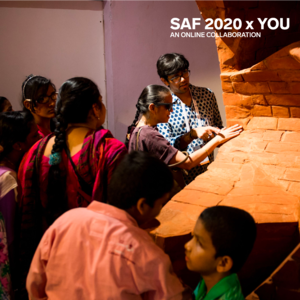
A conversation between Navtej Johar and Kiran Kumar
The conversation between Navtej Johar and Kiran Kumar will broadly touch on three aspects — the historical re-definitions of dance, and conversely abhinya, that have taken place over the last century; the somatic practice that Navtej has devised and how it might be conducive to embodying abhinaya; and viewing abhinaya as a sharing of an in-the-moment-lived-experience as opposed to an “as if” occurrence that can be self-consciously conveyed through illustrative routines of “show-and-tell”.
Watch the discussion on Facebook
Adapting for the Stage
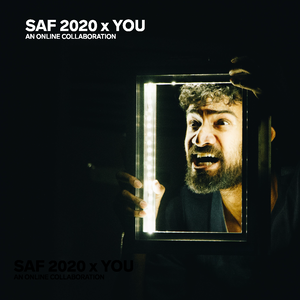
A conversation between Anmol Vellani, Rajiv Krishnan and Sharanya Ramprakash
Adapting for the stage has been narrowly understood as the act of transforming material from another artistic medium, such as poetry, fiction or cinema, into a play. A wider view would include the mining of legal cases, reportage, historical scholarship and lived reality, for example, to create dramatic texts or inspire devised theatre. Adaptations may also refer to the reshaping of plays for another context and time, or to meet the requirements of other genres of theatre, such as musicals and radio dramas (or vice versa). Three theatre practitioners – Anmol Vellani, Rajiv Krishnan and Sharanya Ramprakash – will be in conversation about why and how they have adapted for the stage. They will reference their own work to discuss the purpose, processes and challenges of theatrical adaptation.
Watch the discussion on Facebook
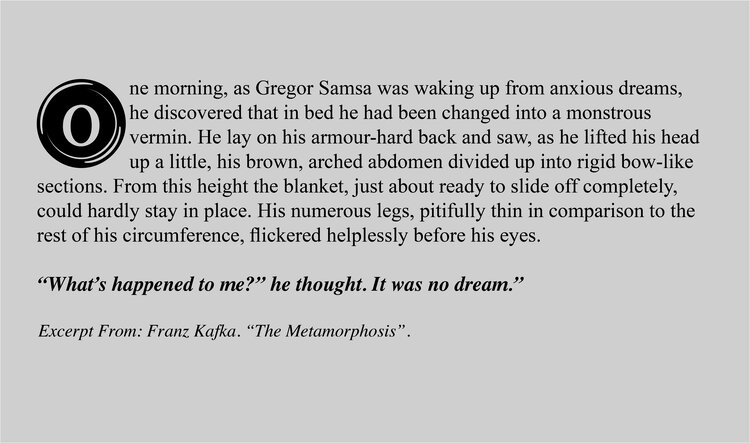
#SAFthrowback
Please Feel at Home, directed by Anmol Vellani for SAF 2019, deals with latent prejudices and preconceptions about the ‘other’.
Mondays Are Best for Flying Out of Windows, also at SAF 2018, was a play based on a collaborative approach to Russian writer Daniil Kharms’ work.
People’s Music, a collaboration between Sumangala Damodaran, Sudhanva Deshpande and Shaaz Ahmed showcased at SAF 2017, was a sound, graphic and animation installation presenting music of protest, resistance and social engagement over the last 80 or so years.
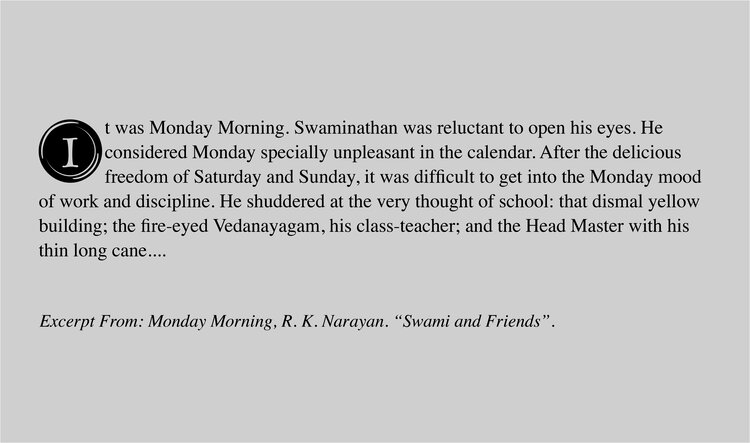
P.S. Out of the Blue
Stories are everywhere. To begin with, how about some tiny tales for the avid reader? If we listen closely, we can hear the stories the music from vinyl records tell. Puzzles perhaps are the most rewarding end to the beginning and middle. There are so many small pieces that add to the story of our lives – do you ever wonder which song topped the charts the day you were born? Did you ever want to learn the beautiful art of origami, or better understand magic? Sometimes, simply looking at the stars can be magical. Our imagination can transport us anywhere. Would you like to touch the stars, or perhaps catch hold of a plane?
Stories take us back to our childhood. Our grandmother’s words ring in our ears, and we try to retell stories from the past through our point of view. Is yours a comic one, or dramatic retelling? Either way, there are a multitude of ways to tell – through our folk traditions, our histories or even in our current times of isolation. Look, listen and retell.
Join us next week for more stories!
Adapting for the Stage
Reading and Resources Library
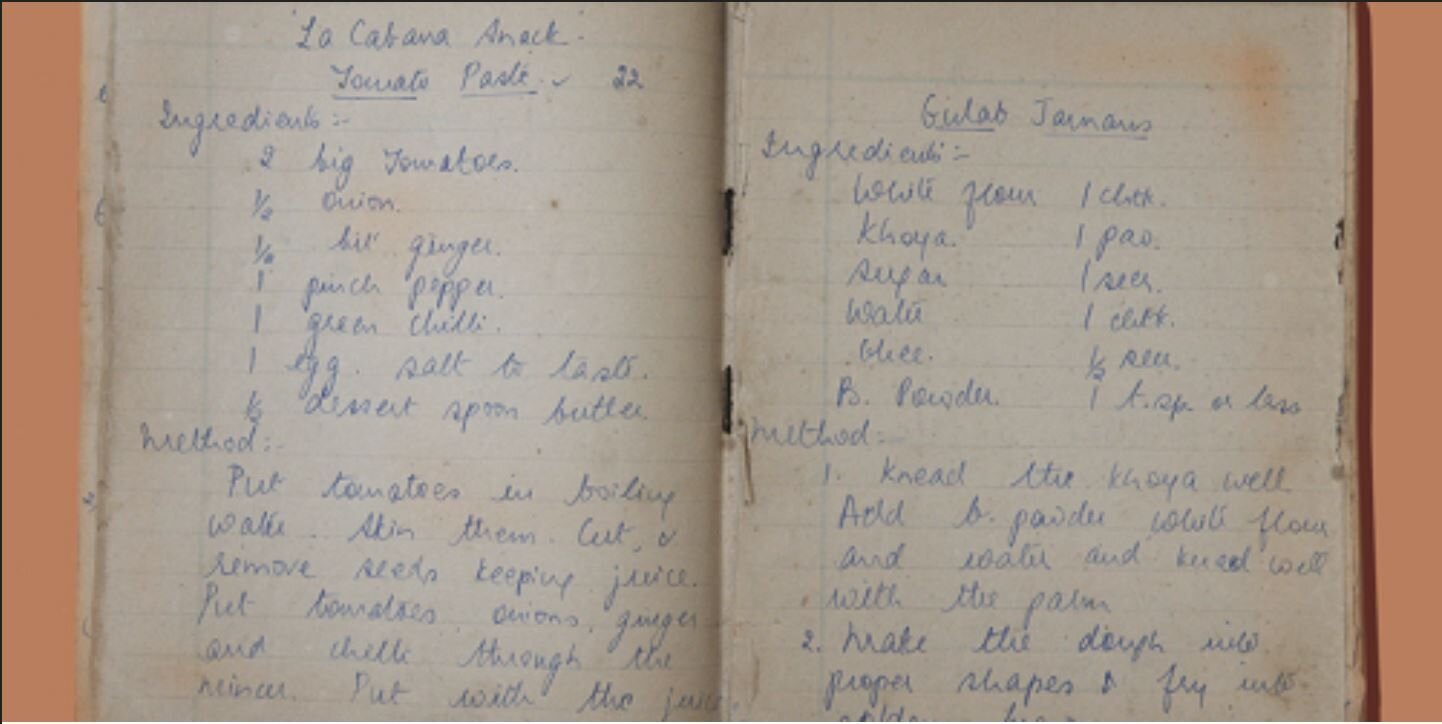
From our Archives
An excerpt from “Beyond Delicious: Talking with Food”, by Veeranganakumari Solanki published on Write | Art | Connect.
As a language food allows us the medium to grapple both with the macro and the micro, the public and the private. Even as I think about the wide variety of people the Goya Journal engages with, the disparate kitchens it travels into, I am reminded of the intimate experiences food mediates. I think of Zacharias’ grandmother and the strength food often offers for negotiating loss. It has been a while since I first saw Reena Saini Kallat’s autobiographical work, ‘Walls of the Womb’, but perhaps because it too deals with the memory of food it comes back to me in a flash.
From the Internet
This week, we bring to you a series of remedies for impaired narratology and writerly afflictions:
On Writer’s Block: Advice from 12 Writers // The Paris Review
Why Does Anyone Write by Alice Adams // LitHub
Your Memory is Fiction by Jessica Andrews // Electric Literature
What’s Needed is Magic: Writing Advice from Haruki Murakami by Emily Temple // Lithub

Serendipity Grants

Owing to the rapidly evolving global situation due to COVID-19, we will be revising the criteria for applications and timelines as part of our grant scheme. Please stay tuned for more information and further announcements. Thank you.
Follow us on Instagram!
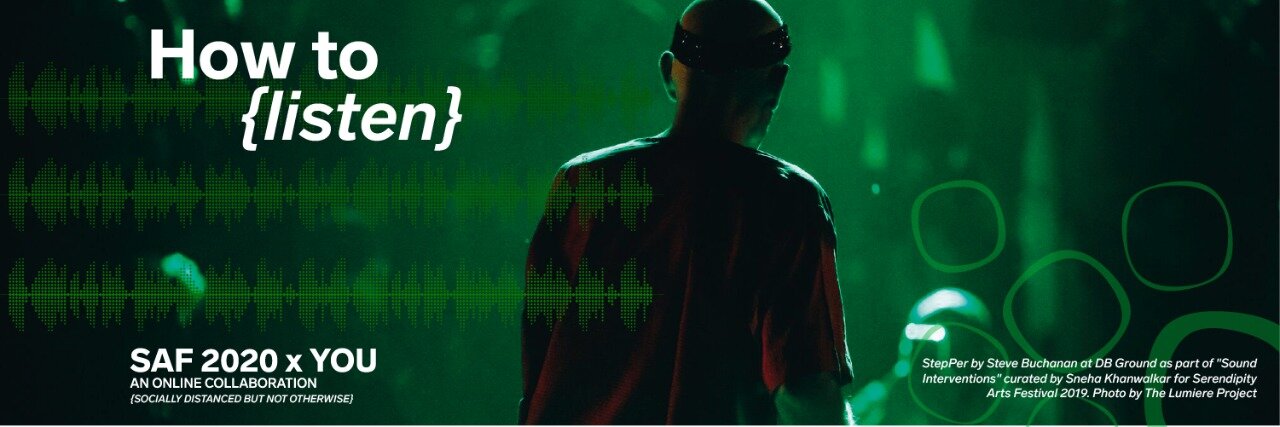
We hear sound. We listen to music. At SAF, we do both.

Now one wonders the difference between sound and music. It’s the same difference as hearing and listening; you dismiss the former but pay attention to the latter. To dissociate this difference between music and sound, we extended ‘listening’ to include and interpret sound in all its various approaches.

Because each memory has a soundtrack of its own, this week we want you to pay attention to that one memory in your head. Nod away to the longest love affair you’ve had with sound and music.
Until the next week, leaving you with some love in this lockdown.

#serendipityconversations
As we increasingly rely on ourselves for sustenance, “how-to” videos, tutorials, and stories have gained prominence on the web. We extend the idea of care, sharing, and reliance that motivates these practices to the world of art, as we enter the minds, processes, and strategies used by curators, artists, and experts to bring their visions to life. Each week we approach a new “how-to”: exploring the complexities of art through approachable, close-to-life conversations.
A World of Sound
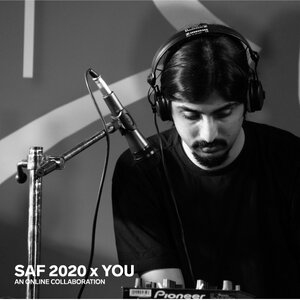
Watch the talk on Facebook
A session on the history of sound, the part it has played in the evolution of society, the technologies around it, and its role in our future. Topics will include new technologies and visualisation of sound and artificial intelligence, as well as sound art in the 20th century.
Watch the talk on Facebook
Listening to the Small Things
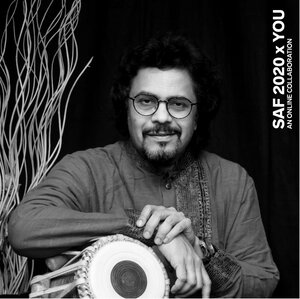
When we listen to a piece of music, we tend to hear the more obvious areas of artistic communication. If it is a vocal driven track, i.e. a song, then we are listening to the song, the voice, the melody, the lyrics, and the rhythm. But there are lots of little things inside any piece of music, which may be considered as sound. It could be a small bell, a restrained percussion instrument playing in the background which we subconsciously imbibe and react to, but which doesn’t pop up in our consciousness, so we don’t factor that as a sound that influenced our listening. Learning to listen is an art in itself. This extends to conversations as well; we often miss out on the small things which would otherwise appear as subtexts in a conversation. Often, the accent, the slight modulation in the tone of the voice of the person we are listening to, can give away much more information if we listen to these things closely. It’s the same with music; it’s also the accents, the voice, the instruments, the rhythm, and the modulations which give away anecdotal information.
Bickram Ghosh will be discussing these small, subtle elements that form the structural basis of a piece of music, bringing to our attention those wonderful little nuances in the world of music.
Watch the talk on Facebook
Electronic Music: Beyond Hedonism
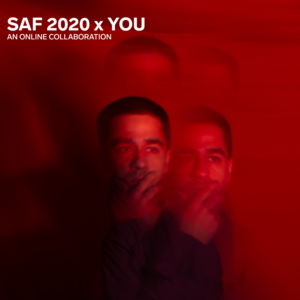
All art is inspired by circumstances, consequences, real life events – Electronic Music was also born and celebrated for the same reasons. This session attempts to retrace Electronic Music’s origins and how it traveled the world, taking various shapes and forms. While highlighting its versatile cultural relevance, we also touch upon certain elements that allow it to flourish, such as the technology involved, the creation process, the artists, socio-cultural influences, and its growth as an art and a business. The session will conclude with an assessment of the Electronic Music Scene in India.
Watch the talk on Facebook
#SAFthrowback
This week, we revisit three sound projects. The Sonic City installation showcased at SAF 2017, was conceptulized and curated by Shubha Mudgal. It was designed as an experiential journey through the aural landscape of contemporary Delhi, replete with both the cacophony as well as the profound beauty of music and natural sounds.
The Museum of Sounds in My Head, curated by Sneha Khanwalkar for SAF 2018, was a series of sonic experiments by people who ‘think’ about music and have a relationship with it. Aimed at triggering the senses and altering the way we listen, the museum was fragmented into various sound spaces that were immersive and surreal.
At SAF 2019, Sound Interventions, also curated by Sneha Khanwalkar, showcased sound interruptions scattered around various Festival venues, ranging from performative to experiential, instinctive to intentional, organic to some very ‘technically sound’ works of art, for audiences to explore and experience.
P.S. Out of the Blue
Hello again! This lockdown has presented us with enough opportunities to pause and listen – not only to the finer sounds of nature, but also pay a little more attention to our inner selves, and the daily sounds that surround us. So much so that Drew Daniels had invited submissions of everyday sounds to create the Quarantine Supercut. If you are a geek for 90s sounds, then the Museum of Endangered Sounds is sure to blow your mind. Do send Brendan, the creator, some sounds that he can add to his collection.
They say the heart of the ocean is a quiet place. Why not dive deep down and see for yourself, or watch enthralling marine life at the Monterey Bay Aquarium via a live Cam.
From a place of no sound, we thought you may like to watch a short film by D.A.D.D.Y on a soundtrack for a life gone terrible awry.
Till travel doesn’t resume, there is no harm in listening to a playlist that will take you on a road trip to Tokyo or help you drift off to the sounds of whale songs. As for us, we will be trying these fun recipes by our favorite comics and watching some fabulous performances as part of NCPA at Home!
Until next week there’s lots to explore, so dive in!
#SAFthrowback Serendipity Soundscapes
Often called the passion project of Serendipity Arts Foundation, Serendipity Soundscapes is a collection of diverse musicians immersed in experimenting with melodies, genres, and words.
During SAF 2018, The Maverick Playlist presented a myriad of original compositions by Shubha Mudgal and Aneesh Pradhan, with traditional as well as newly composed lyrics. The musical structures included elements from Hindustani, jazz, blues, rock, electronic music, among others.Serendipity Arts Festival · Maverick Playlist – Serendipity Soundscapes
Reading and Resources Library

From our Archives
This week we present an exclusive peek into an upcoming essay by Gautam Pemmaraju on “Sound Interventions”—a project curated by Sneha Khanwalkar at Serendipity Arts Festival 2019. The essay will be published as part of Projects/Processes 2019.
From the Internet
From the interwebs, we bring to you –
The bizarre appeal of an awful music album by Vox;
A deep-dive into the emergence, history, and habitus of electronic music.
We LovePanjim!
Analogue Audio Sources and Critical Listening
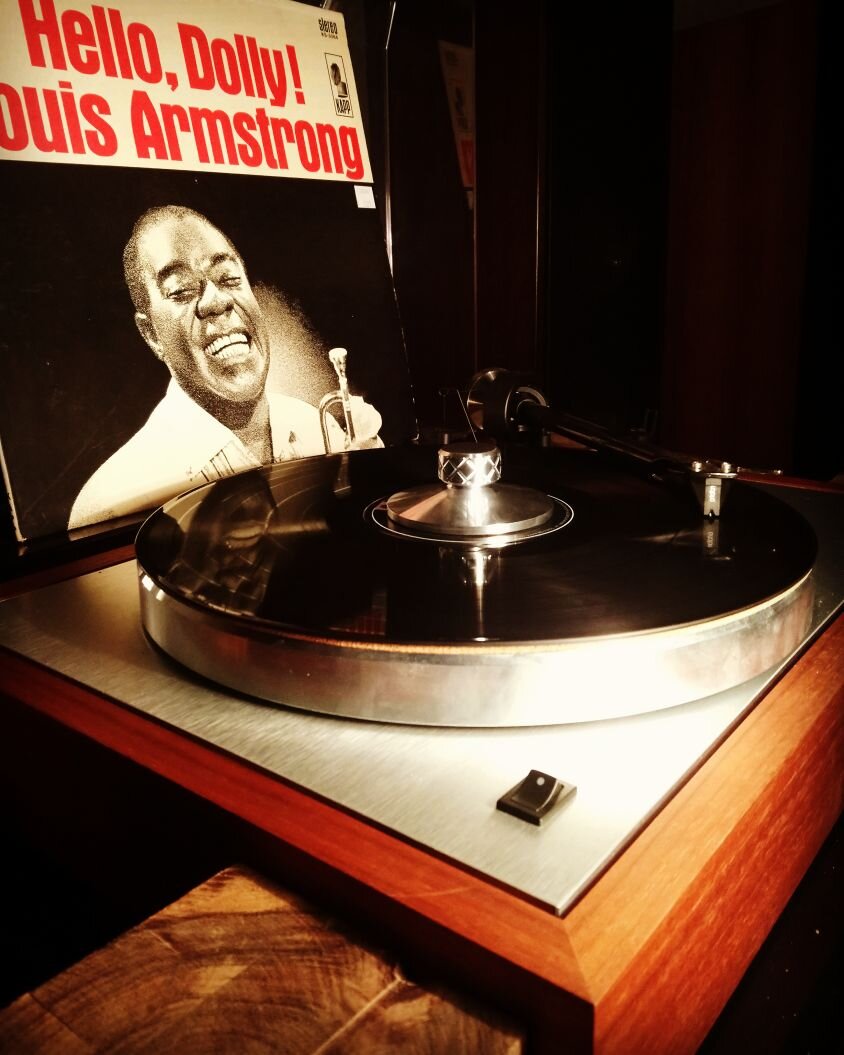
Join Buland Shukla as he gives us a brief history of vinyl records and the technology behind it, as well the current context of the medium. He will also talk about how to handle vinyls, and the best method of storing, playing, and managing collections, as well as the kind of equipment required. Buland will touch upon the difference between analog and digital music with a brief description of the concept of critical listening. He will also talk about future prospects of vinyl as a medium, and how it supports the artists directly, as well as the idea behind listening to music on a physical medium.
Join us on Saturday, May 29rd, 6:00 PM IST on Instagram Live
Online Courses

Follow us on Instagram!
Serendipity Grants

The Serendipity Grants 2020 – 2021, the second scheme of grants aims to create sustainable knowledge networks to promote inquiry into contemporary art practices, and build a framework for supporting the arts community. The grant seeks to support innovative research initiatives by individual researchers, and the creation of a new body of work in Theatre that will contribute to the discourse around performing and visual arts in South Asia.
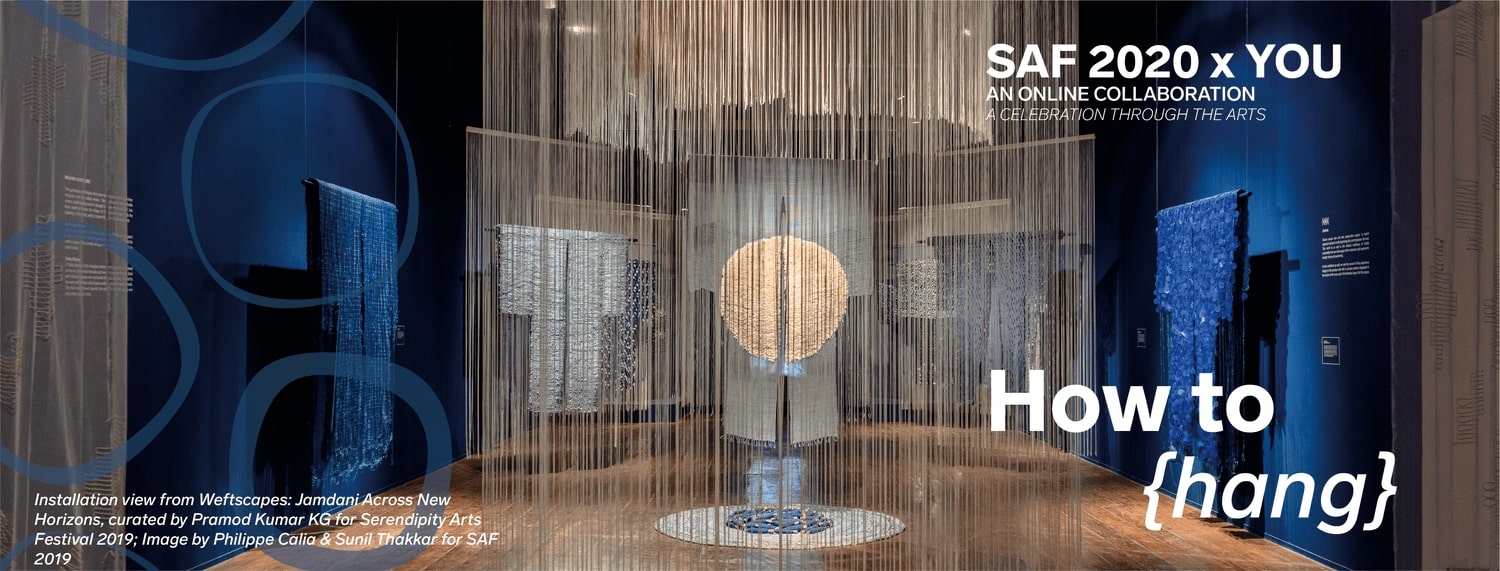
How to {hang}
As we enter the 55th day of lockdown with restrictions easing in some places, perhaps the only thing which hasn’t changed in the last 8 weeks is a sense of uncertainty. There are days of worry, and days of hope. Through it all, we have been lucky to remain connected with our family, friends, colleagues, and the outside world through an increasingly important tool – the Internet. Our lives have taken on new forms, new routines, new ways of interacting, learning, reading, and being. How will we move forward? This question looms large on all of our minds. At Serendipity, we remain committed to keep the conversation around the arts going, and over the next month, are very pleased to bring to you a How To Series as we re-visit past projects, ponder over our present lives, and think big with future dreams in a series of newsletters and online conversations ranging from scenography to sound, storytelling to reading, performance to technology and so much more in between.
In “How to Hang”, we approach the question of how the coming together of a space, a person and a work of art can create new ways of seeing, thinking, and feeling. How does an exhibition display build affinities, relations, and resonances between different histories and peoples? Can showcasing an object in a different way lead us to understand everyday things, such as textiles and saris, in a new light? How is the “scene” of art produced, why do spaces that display and host art, through exhibitions and performances, entice a difference in feeling? As social distancing becomes the norm, where do we go to find these feelings again—how has our relationship to our own objects and spaces changed? How do we hold on to the moments of togetherness, fun, lightheartedness in the face of separation? Join us as we ask these, and many other questions, always together.
#serendipityconversations
As we increasingly rely on ourselves for sustenance, “how-to” videos, tutorials, and stories have gained prominence on the web. We extend the idea of care, sharing, and reliance that motivates these practices to the world of art, as we enter the minds, processes, and strategies used by curators, artists, and experts to bring their visions to life. Each week we approach a new “how-to”: exploring the complexities of art through approachable, close-to-life conversations.
Curation & Scenography : The Yin & Yang of Experiential Exhibitions
Panelists: Pramod Kumar KG and Aparna Nambiar
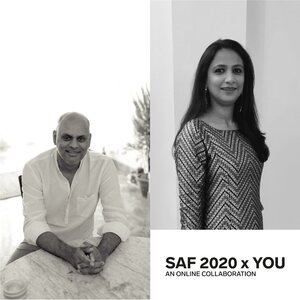
While the curator creates a narrative that they think needs to be shared with the larger world, it is most often the scenographer who gives a visual vocabulary to the idea. The audience almost always sees the end narrative via the filter of the scenographer. This conversation hopes to bring to light the journey of a collaborative process where narrative and aesthetics deal with trust and control towards a combined understanding of a singular vision. Detailing this common idea needs points of cohesion between two kinds of processes. This exploratory talk shall also examine and bring to the fore points of dissonance and its negotiation while a project is underway.
Watch the conversation again on Facebook!
Exhibition Site as Learning Ground
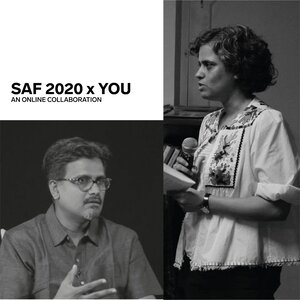
A conversation between Vidya Shivadas & Sanchayan Ghosh
In the last few years the educational turn has been of great interest to curators working in the field of exhibition making. The discussants for this panel will present some of the artistic and curatorial projects they have developed with art students and young practitioners. They will also touch upon exhibition platforms they have worked on together like Call to Disorder: Experiments in Practice and Research, held at Serendipity Arts Festival 2019, and Students’ Biennale 2018.
Watch the conversation again on Facebook
Public Art as Civic Intervention: Bhubaneshwar Art Trail

“Navigation is Offline”, co-curated by Jagannath Panda and Premjish Achari was the first edition of Bhubaneswar Art Trail (BAT 2018), a contemporary public art exhibition held in the Old Town of Bhubaneswar, Odisha. Through this talk, Premjish discusses the challenges in creating a contemporary public art exhibition in a temple town and shares the experiences in negotiating the antagonisms of the diverse communities, opening up the multiple worlds which exist in the city while attempting to foreground the voices of the marginalised.
Watch the talk again on Facebook!
Composite Arts Practices - Emergent Positions
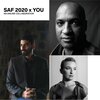
Conversations between Rahaab Allana, Dr. Mark Sealy, and Nathalie Johnston
The three arts professionals discuss ongoing strategies at work, as well as prior engagements within the visual/lens-based field, in order to explore the new place and modes of representation that can be envisioned in the future – how we may intuitively or creatively grasp all that is beyond the frame in our current times. Watch the conversation again on Facebook!#SAFthrowback
This week, we re-visit three very different exhibitions showcased at Serendipity Arts Festival 2019. The beautifully displayed Weftscapes: Jamdani Across New Horizons, curated by Pramod Kumar KG, examines a fresh approach to the creation and making of Jamdani fabrics, both in its weaving, choice of raw materials, colour, patterns, designs and the end product – a finished garment.
Look, Stranger!, curated by Rahaab Allana, looked at lens-based practices in the South Asian region, influenced by the technological ethos of the turn of the last century. Drawing an arc of inquiry from the Film und Foto (Fifo) display in Stuttgart, Germany in 1929, to experimental contemporary photography from South Asia, the display sought to identify concerns around the persistence of certain modernist historical trajectories.
Call to Disorder: Experiments in Practice and Research, curated by Vidya Shivadas, was the culmination of a three year collaboration between FICA (Foundation for Indian Contemporary Art) and SAF, looking at different focus aspects each year such as light, sound, site, movement, creation of narratives via mediums of zines, comics, installations and video in a post academic space.
Reading and Resources Library

A thematic selection of essays from across the web, discussing aspects of each week’s theme. This week, we bring you essays on female desire and hanging out, spending time with one painting, race and perception of life, and the possibilities of representing the lives and journeys of the human mind.
From our archives
Body | Space | Time by Ranjana Dave
An Archaeology of Silence: The Aniconic Worlds of Mrinalini Mukherje by Arushi Vats.
From the Internet
Read about desire and friendship, and brief moments of hanging out in Portrait of a Lady on Fire.
Teju Cole’s beautiful, burning words on photography, skin, and blackness.
What happens when you spend a really long time hanging out with a painting?
We Love Panjim!

Join Jack Sukhija and Atish Fernandes as they take us to the lesser known Bairro São Tomé, followed by a stroll through Fontainhas. The main focus will be on the city’s unique, hidden gems, people, and establishments that often don’t get the attention they deserve.
Join us on Saturday, May 23rd, 6:30 PM IST on Instagram Live
Courses and Learning Portals
We recommend the following courses and online resources to expand your skill sets!

Support the Arts
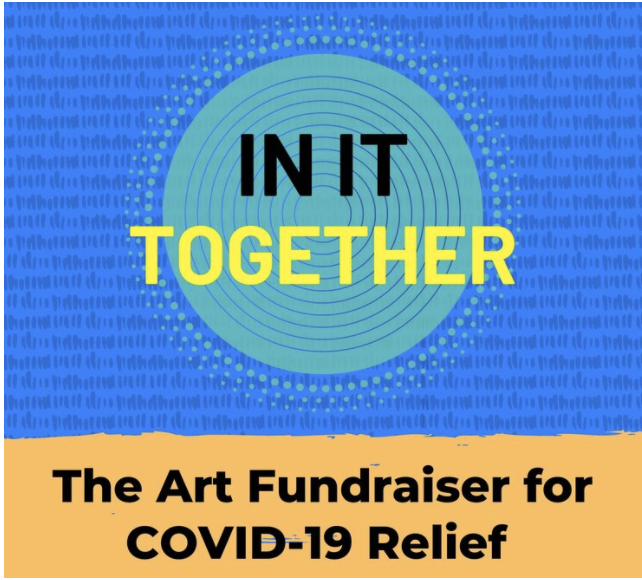
IN IT TOGETHER | The Art Fundraiser for COVID 19 Relief is an artist-led initiative supporting relief efforts by Goonj & Karwan e Mohabbat
Follow us on Instagram!
Serendipity Grants


P.S. Out of the Blue
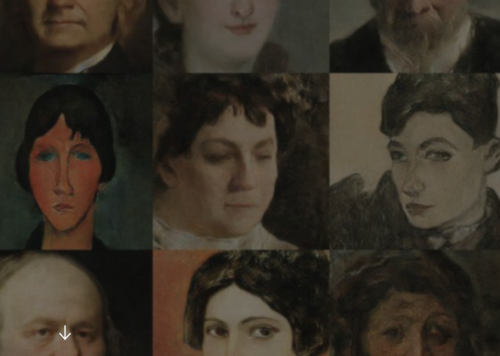
LOGIN to see more
To see all the content we have to offer, login below
OR
Don't have an account?
REGISTER FOR FREE
REGISTER FOR FREE
Registration is completely free, stay connected to Serendipity Arts

